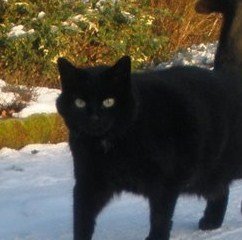Introduction to Markdown
This tutorial explains the Markdown syntax for tutorials hosted on this website. To see the raw text version click here.
Metadata
At the very top of every document metadata is provided to tell the website how the page should be set-up, it's called front-matter. Don't worry about how it works, all that is required is to provide layout, status, author, title and link parameters. So for this document the parameters are:
---
layout: doc
status: complete
author: [Dom Bennett]
title: Introduction to Markdown
permalink: /docs/introduction_to_markdown/
---
Simply copy this and place it at the top of any document you create. The title
specifies the name of the page that will appear in users' browsers. The
permalink is always /docs/[name_of_file], with the name of the file ignoring
the extension. Currently status can either be 'incomplete' or 'complete'.
Also, remember to add your name to the author list if you have contributed
substantially to any document you edit, e.g. [John Smith,Mary Jane].
(In the future this will be automatically generated from the git history.)
Headings
Headings in Markdown are denoted using # symbol, subheadings are specified by
adding an extra #. So for example, this Markdown code:
# Heading 1
Words words words ....
## Subheading 1
Words words words ....
### Subheading 2
Words words words ....
Produces this:
Heading 1
Words words words ....
Subheading 1
Words words words ....
Subheading 2
Words words words ....
Lists
Bullet point lists are created with *, numbered lists with numbers. e.g.
* item 1
* item 2
1. item 1
2. item 2
Produces:
- item 1
- item 2
- item 1
- item 2
References
To add URL links use this syntax:
[hyperlinked text](url/to/link)
To link between different documents on the website use the site.baseurl
command:
[hyperlinked text]({{ site.baseurl }}/docs/name_of_page.md)
To add images, the syntax is very similar:

Instead of linking to images elsewhere on the internet, you can link to images
uploaded to the BES-QSIG's docs repo. All images are kept in the img/ folder.
Instead of providing a URL, you can use this command:
{{ site.imgurl }}/name_of_file
To make your life easier, it's best to create references to images rather than have chunks of URL in the middle of your text. For example, at the bottom of this .md file I've created a reference to an image of my cat like so:
<!-- References -->
[cat]: {{ site.imgurl }}/mara_cat.jpg "This is my cat, she's called Mara."
Note <!-- and --> indicate the start and end of comments. To use this
reference in the text I type:
![cat][cat]
Where the second [cat] is the named reference to the URL link I provide at the
bottom of the page. So using it gives ....

Miaow miaow.
Code blocks
This probably the most important element for coding manuals and tutorials. Markdown makes these very easy to insert with language-specific syntax colouring.
To insert code inline use `. I use this to highlight folders/,
variables, functions etc. if I refer to them in-text. To insert blocks of
text, indent the paragraph as I have been doing above for Markdown examples, e.g.
Lorem ipsum dolor sit amet, consectetur adipiscing elit, sed do eiusmod
tempor incididunt ut labore et dolore magna aliqua. Ut enim ad minim
veniam, quis nostrud exercitation ullamco laboris nisi ut aliquip ex ea
commodo consequat. Duis aute irure dolor in reprehenderit in voluptate
velit esse cillum dolore eu fugiat nulla pariatur. Excepteur sint
occaecat cupidatat non proident, sunt in culpa qui officia deserunt mollit
anim id est laborum.
We use GitHub flavoured markdown so for syntax code colouring, the code block
is specified using three ` and the name of the language at the beginning of
the code block and three ` at the end. For example, this block of R
code ....
```R
greeting <- 'Hello world!'
for (letter in greeting) {
cat (letter, '\n')
}
cat (greeting)
```
.... produces:
greeting <- 'Hello world!'
for (letter in greeting) {
cat (letter, '\n')
}
cat (greeting)
Other languages are also possible, such as for python:
```python
greeting = 'Hello world!'
for letter in greeting:
print(letter)
print(greeting)
```
greeting = 'Hello world!'
for letter in greeting:
print(letter)
print(greeting)
For a full list of available languages click here.
Further reading
Other features are also available for Markdown such as tables. You can also
insert HTML into the Markdown file if you want to do anything complicated.
Here are some useful references: